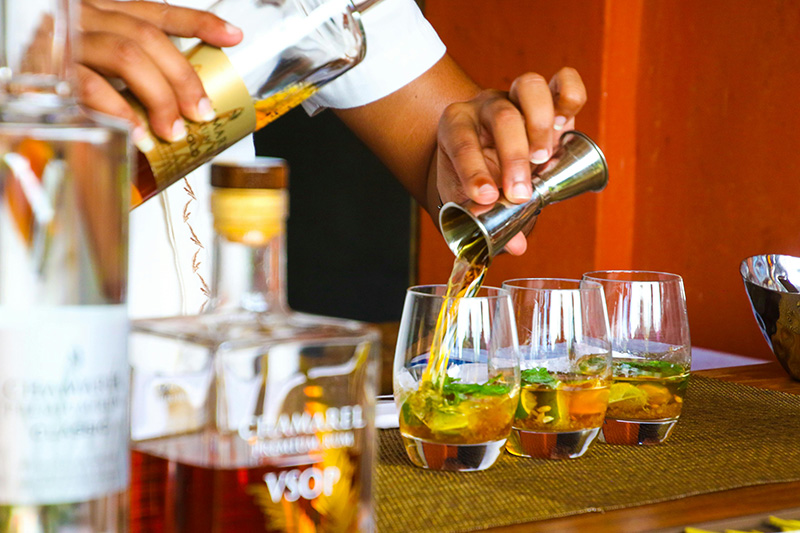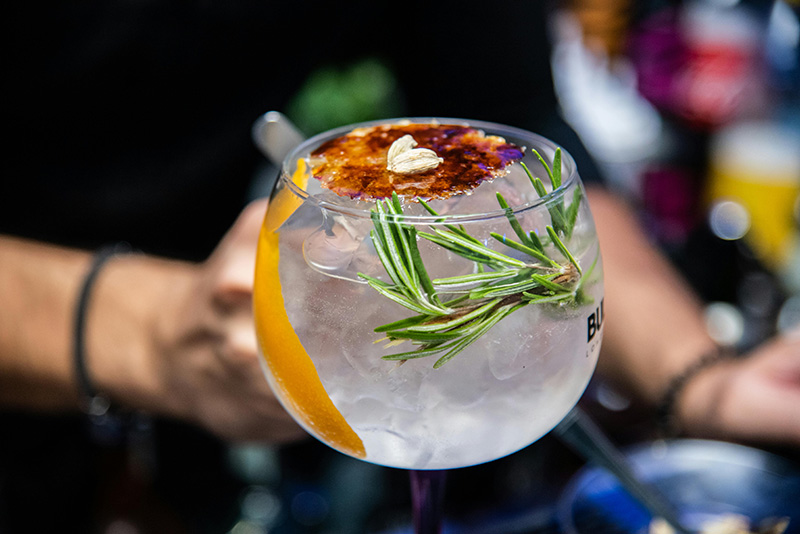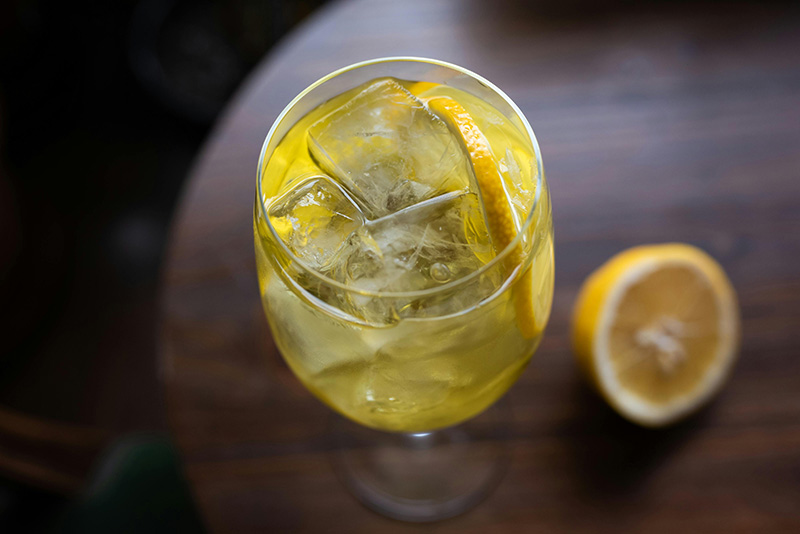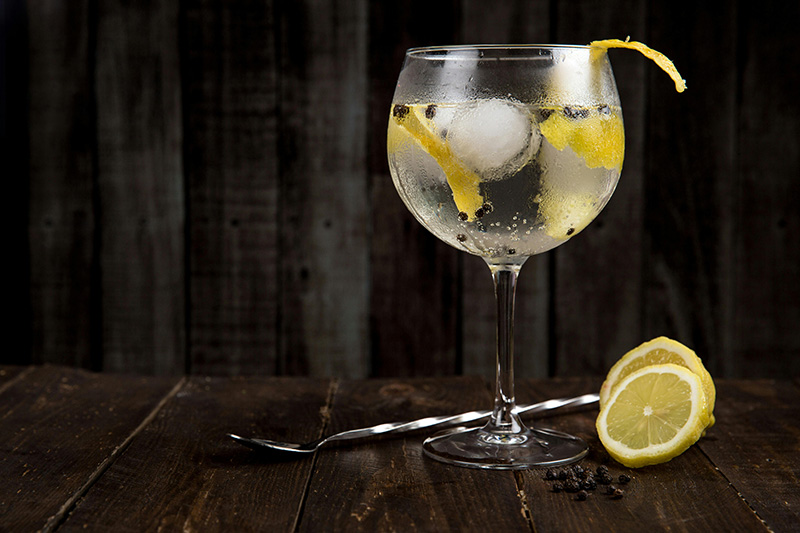
In the world of mixology, where each cocktail is an artful creation, attention to detail is paramount. It’s not just about the choice of spirits and mixers; it’s also about the garnishes and presentation that make a drink truly memorable.
One such technique that has been a staple in mixology for decades is salting the rim of a glass. As the name of the technique suggests, it is the simple act of strategically placing salt around the rim of a glass.
This seemingly simple act goes beyond aesthetics – it significantly impacts the taste and aroma of the cocktail that is about to be enjoyed. The question now is how and why does a small ingredient such as salt change the flavor of a drink?
Fortunately, this is exactly what we’ll look at. In this article, we’ll dive deep into the science behind how salt enhances flavor on glass rims and explore the chemical reactions that make it possible.

A Historical Tradition
The act of placing salt around the rim of a glass is not something that just sprouted one day. Salting the rim of a glass is actually a practice steeped in tradition and history. It’s a technique that dates back to the early days of cocktail culture.
Margaritas and Bloody Marys are among the most famous cocktails known for their salted rims. This practice not only adds a touch of elegance to the presentation but, like our ancestors have discovered, also plays a crucial role in flavor enhancement.
Types of Salts in Mixology
Mixologists often have a variety of salts at their disposal, each with its unique characteristics. Kosher salt, sea salt, and flavored salts like smoked salt or chili salt are commonly used for rimming glasses. The choice of salt can significantly impact the overall flavor profile of the cocktail.
The Science Behind Taste Perception
To understand how salt enhances flavor on glass rims, we must first delve into the science of taste perception. Our taste buds are equipped to detect five primary taste sensations: sweet, sour, salty, bitter, and umami. Among these, saltiness is the sensation associated with the presence of sodium ions.
When salt comes into contact with our taste buds, it triggers a chain reaction. Sodium ions in the salt interact with taste receptor cells on the tongue. This interaction sends electrical signals to the brain, resulting in the perception of saltiness. The brain processes this information, contributing to the overall taste experience of the cocktail.

Chemical Reactions with Salt
The magic of salt-rimmed glasses lies in the chemical reactions that occur when salt interacts with the various cocktail ingredients. Here’s how it works.
- Balancing Flavors: Salt has the unique ability to balance and enhance flavors, not only in culinary dishes, but also in cocktails. It can help mitigate the bitterness of certain ingredients used in cocktails, such as citrus juices or herbal liqueurs, while simultaneously accentuating the sweetness.
- Enhancing Aroma: Beyond taste, salt plays a crucial role in enhancing the aroma of the drink. When you take a sip from a salt-rimmed glass, the scent of the salt is subtly released with each sip, creating a sensory experience that complements the taste.
- Texture Enhancement: The physical texture of salt on the rim can also affect the overall drinking experience. It provides a contrasting crunchiness to the smoothness of the liquid inside, adding a delightful textural element.
Salt’s Impact on Aroma
Aroma and taste are intricately connected. Our sense of smell is essential for fully experiencing the flavors in a cocktail. When we sip a drink from a salt-rimmed glass, the aromatic compounds in the salt are released into the air. These compounds interact with our olfactory receptors, influencing our perception of flavor.
For instance, a margarita with a salted rim not only tastes tangy and refreshing but also carries a subtle saline aroma that enhances the overall drinking experience. This phenomenon highlights the importance of the multi-sensory aspect of mixology.
Balancing Saltiness in Cocktails
Achieving the perfect balance of saltiness in a cocktail is an art in itself. Too much salt can overwhelm the other flavors, while too little might go unnoticed. Mixologists need to experiment with different salt types and quantities to find the right equilibrium.
Here are some tips for achieving that balance.
- Taste Testing: Regularly taste your cocktails during preparation to gauge the level of saltiness. Remember that what works for one cocktail may not work for another.
- Rim Variation: Consider varying the width of the salt rim. A wider rim will provide a more pronounced saltiness, while a narrower rim offers a subtler effect.
- Salt Types: Experiment with different types of salt to discover which best complements your cocktail. For instance, a smoky mezcal cocktail might benefit from a smoked sea salt rim.

Innovative Salt Rim Variations
In the ever-evolving world of mixology, creativity knows no bounds. Modern mixologists have pushed the boundaries of salt-rimmed glasses, coming up with innovative variations that surprise and delight drinkers.
Some exciting salt rim variations include:
- Spiced Salts: Combining salt with spices like chili, paprika, or cinnamon to add complexity to the cocktail’s flavor profile.
- Citrus Zest: Using citrus zest (lemon, lime, or orange) along with salt for a tangy and aromatic rim.
- Herbal Infusions: Infusing salt with herbs like rosemary, thyme, or lavender to impart unique herbal notes to the drink.
Health Considerations and Alternatives
While salt-rimmed cocktails are undeniably delicious, it’s essential to be mindful of sodium intake, as excessive salt consumption can lead to health issues. For those concerned about sodium, there are alternatives to achieve similar effects.
- Citrus Zest: Using citrus zest on the rim provides aroma and a touch of tanginess without the sodium content of salt.
- Sugar Rims: Sweetened rims with sugar or flavored sugars (such as cinnamon sugar) can add a delightful contrast to cocktails.
- Herb Rims: Herbal-infused rims can provide aromatic complexity without the saltiness.
- Mocktail Versions: For non-drinkers or those looking to limit alcohol consumption, salt alternatives can still be used to enhance the flavor of mocktails.
Expert Insights and Mixologist Interviews
To gain a deeper understanding of the significance of salt in cocktail preparation, we reached out to renowned mixologists and experts in the field.
Sarah Martinez, Award-Winning Mixologist: “Salt is like a secret ingredient in mixology. It has the power to elevate a cocktail’s taste and aroma to new heights. The key is to use it judiciously and thoughtfully.”
Dr. John Cooper, Food Chemist: “The science behind salt-rimmed glasses is fascinating. It’s not just about taste; it’s about how our senses work together to create a memorable drinking experience.”

Adding Brushstrokes to the Glass Rim Canvas
In the world of mixology, the glass rim is a canvas, and salt is the artist’s brushstroke that adds depth and dimension to a cocktail’s flavor and aroma. Understanding the science behind this practice allows mixologists and cocktail enthusiasts to appreciate the nuanced artistry of their favorite drinks fully.
The simple act of salting a glass rim is a testament to the meticulous craftsmanship that goes into creating the perfect cocktail. So, the next time you savor a salt-rimmed margarita or a Bloody Mary, raise your glass to the science and artistry that make it a truly exceptional experience.

